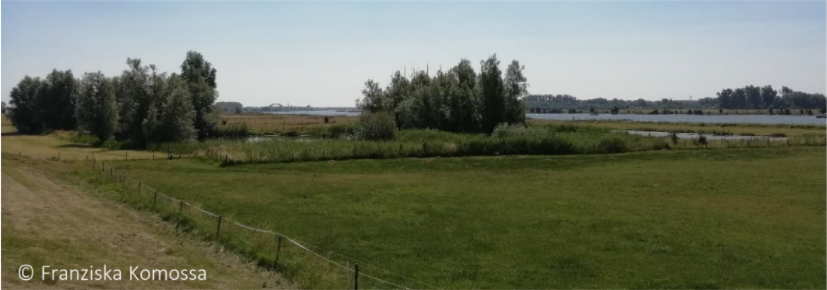Summary
Collective implementation of agri-environmental management has been started up throughout the Netherlands since 2016. After individual management had proven to fail to deliver the desired agri-environmental-climate public goods (AECPGs), a larger-scale implementation of agri-environmental management was considered a more feasible and promising solution. In the central Dutch province of Utrecht, a wide variety of AECPGs is required by society and farmers. This includes improvement of water quality, enhancing and emphasizing the landscape diversity that supports recreation, and providing a habitat for species including bats and owls. In the eastern half of the province, the Kromme Rijn region, the “Agrarisch Natuur Collectief Utrecht Oost” (agricultural nature collective Utrecht East) organizes the large-scale nature management. Land owners are members of the collective, which organizes payment for specific nature management actions performed by farmers, monitors, and brokers between land owners and organizations / companies that implement some specific nature management actions, based on a common regional management plan. The collective is certified by the national certification institute for agri- environmental management and has its own quality assurance controllers.
Objectives
Objectives are set by the provinces. In the case of Kromme Rijn, the province of Utrecht defines targets in its annual nature management plan. Defined are targets for nature, landscape, agricultural nature and landscape management. Landscape management targets at fostering landscape diversity. The ANLM aims at maintaining landscape elements: characteristic on the levees are tree lines, small patches of forests, wooded banks, ponds, and small traditional orchards. The lower and wetter part of the region.
Langbroekerwetering, contains small patches of wet species-rich grasslands that are extensively managed through mowing, combined with tree lines and small fields.
Creating habitat for amphibians, including the great crested newt, for several owls, and several bat species. Creating habitats for threatened species of extensive traditional arable lands.
Public Goods








Problem description
Agri-environmental management has been introduced in the Netherlands in 1975.
1000 km2 were assigned as agriculture-nature area and managed by nature organizations, another 1000 km2 included “normal” farmland, on which farmers planned their farmland and management practices in a nature-friendly way. Since the year 2000, it became increasingly apparent that farm-level agri-environmental management was not effective, because target species required a larger mosaic of land use and land cover than can be provided on a single farm. In 2016, agri- environmental management by nature collectives has been introduced by the Dutch government
